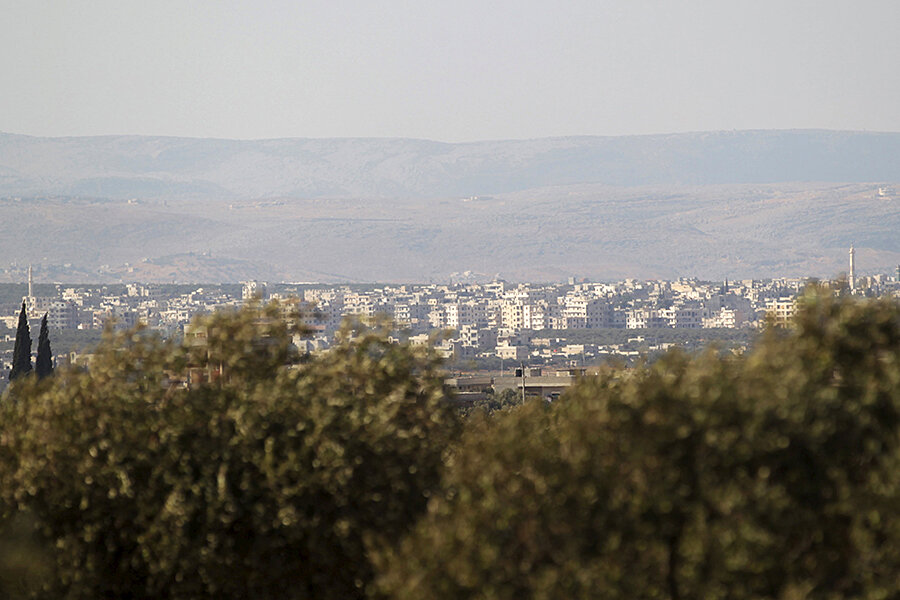Syrian cease-fire: Another try at pragmatism in three besieged towns
Loading...
| Beirut, Lebanon
After two months of on-off negotiations and two failed agreements, Iran and Syrian rebels have agreed to a six-month cease-fire in three besieged towns that will include the evacuation of civilians and combatants. And despite the previous failures, there are signs of hope this time.
The deal, which will be overseen by the United Nations, includes the Sunni-populated town of Zabadani, 17 miles northwest of Damascus and adjacent to the border with Lebanon. Since July, Zabadani has been under siege by the Syrian Army’s 4th Armored Division and fighters from Lebanon’s militant Shiite Hezbollah organization.
The understanding allows for the surviving rebel forces and their families and any other civilians who wish to leave to head to the rebel-held Idlib Province in northern Syria. Each fighter reportedly is permitted to carry one light weapon and a backpack. Heavy weaponry must remain behind or be destroyed.
“It’s a case of pragmatism because everyone is in a tight spot,” says a Western diplomat familiar with the arrangements. Heavy fighting that preceded the cease-fire led to the conclusion that both sides would benefit.
Thousands of civilians affected
The other two towns involved in the deal are in Idlib Province: Foua and Kefraya, both populated by Shiites, have been besieged by an array of rebel factions for more than six months. Under the arrangement, up to 10,000 civilians will be allowed to leave the two towns and move to government-controlled territory further south. It was unclear whether the deal also permits the departure of combatants from Foua and Kefraya.
The cease-fire negotiations became possible following the assault on Zabadani in early July. The former summer resort town is the last significant rebel stronghold in the Qalamoun region between Damascus and Homs. Hezbollah and the Syrian army made slow but steady progress. By last week, the remaining rebels reportedly had been squeezed into a few blocks in the city center.
However, rebel factions, including the militant Islamist Ahrar ash-Sham and Al Qaeda-affiliated Jabhat al-Nusra, tightened their joint siege of Kefraya and Foua to put pressure on Iran and Hezbollah to ease the offensive against Zabadani. The quid pro quo assaults led to Turkey-brokered, and UN-facilitated, cease-fire talks between Iranian officers and representatives of Ahrar ash-Sham.
“We didn’t want to take down Zabadani completely because of what would happen to Foua and Kefraya. Both sides needed a deal,” says Abu Khalil, a veteran Hezbollah fighter who has served more than 20 combat tours in Syria, including in Zabadani.
Humanitarian aid before evacuations
In early August, a cease-fire collapsed after a few days. Iran was pushing an arrangement to evacuate the populations of all three towns, but Ahrar ash-Sham rejected the offer, saying it was a “plan for sect-based displacement.” But it did say it would hold consultations with other rebel factions and residents of Zabadani.
Iran, a key backer of the regime of Syrian President Bashar al-Assad, has been accused of driving Sunnis away from core government-held areas and allowing Shiites to settle instead.
Last Friday, Foua was subjected to a heavy barrage of hundreds of rockets and at least seven suicide car bomb attacks. Two days later, both sides agreed to a cease-fire for the three towns. The cease-fire led to the breakthrough deal.
The two-stage arrangement will begin with the provision of humanitarian assistance to the populations of Zabadani, Foua, and Kefraya. That should last two weeks, and then the population evacuations will take place.





